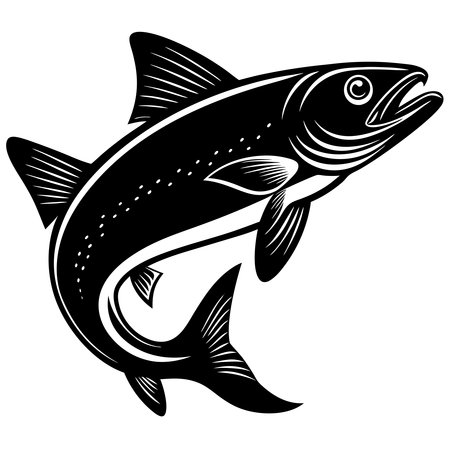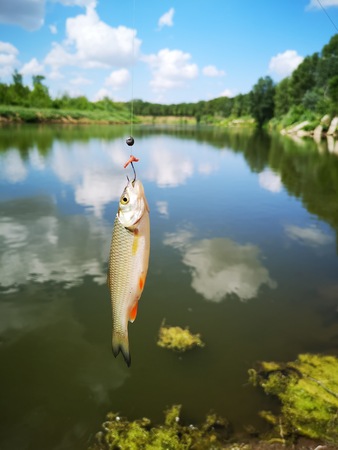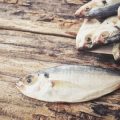Understanding Fall Weather Patterns in the U.S.
Fall fishing in America is a game of reading the skies as much as working the water. As summer’s heat fades, a series of predictable but dramatic weather transitions sweep across the country. In the North, crisp nights and shorter days drive down water temperatures, pushing baitfish and big predators closer to shorelines and shallows. The Midwest sees powerful cold fronts rolling in, often bringing rain, gusty winds, and sudden temperature drops. Out West, high-pressure systems can lock things into stable patterns for weeks before an abrupt shift shakes everything up. Down South, lingering warmth mixes with the first real cool snaps, stirring up bass and crappie activity in reservoirs and rivers. Understanding how these regional shifts play out is key for any angler looking to dial in on fall bites. The changing barometric pressure, cloud cover, and fluctuating temperatures not only influence fish behavior—they dictate where and when to fish if you want to stack your limit this season.
2. Cold Fronts: Double-Edged Sword for Anglers
When it comes to fall fishing in the U.S., nothing stirs up more chatter among hardcore anglers than the arrival of a cold front. These weather shifts act like flipping a switch on fish behavior, often separating seasoned pros from weekend warriors. Understanding how incoming and outgoing cold fronts play out can be the edge you need to load the livewell when everyone else is striking out.
Pressure Drops & Feeding Windows
As a cold front approaches, atmospheric pressure starts to drop. This triggers an uptick in fish activity—bass, walleye, and other predators sense the change and enter a short but intense feeding window. They know tough times are coming and start gorging on whatever baitfish they can find. This is prime time to throw reaction baits or jigs around structure—capitalize while they’re aggressive, because it won’t last long.
The After-Front Lull
Once that cold front pushes through, things get tricky. The sky clears, winds die down, and the pressure climbs fast. Fish hunker down, sticking tight to cover or dropping deeper. The notorious “after-front lull” is no myth—bites get scarce, and finesse tactics become critical. Think downsizing your presentation and targeting shaded or deep-water haunts where fish sulk until conditions stabilize.
Cold Front Effects on Fish Behavior Table
| Weather Stage | Fish Activity | Tactics That Work |
|---|---|---|
| Incoming Cold Front | Increased feeding, aggressive strikes | Fast-moving lures, power fishing near structure |
| During/After Cold Front | Lethargic, tight to cover or deeper water | Finesse baits, slow presentations, target heavy cover |
Veteran American anglers know—timing your outings around these weather swings isn’t just smart; it’s essential for consistent fall success. Watch those barometers and don’t let a passing front catch you napping. Fish hard when the bite’s hot, then grind with precision when it cools off.

3. Warm Spells and ‘Indian Summer’ Opportunities
When autumn throws a curveball with unexpected warm spells—what many anglers call “Indian Summer”—the water comes alive in ways that can catch even seasoned fishermen off guard. These unseasonal warm-ups aren’t just a pleasant surprise for folks enjoying the outdoors; they’re a trigger for late-season feeding frenzies that every hard-core angler should know how to exploit. During these bursts of warmth, baitfish become more active near the surface, drawing in predator fish like bass, walleye, and pike. The key here is mobility: don’t get locked into early fall patterns. Instead, track temperature spikes and target shallower flats, creek mouths, and sun-warmed coves where fish are hunting aggressively. Switching up your tactics to match the mood is crucial—try fast-moving lures like spinnerbaits, lipless crankbaits, or topwaters to mimic frantic baitfish. Don’t be afraid to cover water quickly; this isn’t the time for finesse, but for bold presentations and reaction strikes. Another tip straight from Midwest pros: pay close attention to wind direction during these warm spells. South winds often push warmer surface water and baitfish into specific areas, stacking the odds in your favor if you’re set up on the right side of a point or bay. Ultimately, these rare Indian Summer windows are about striking while the iron’s hot—maximize your time on the water, stay adaptable, and you’ll tap into some of fall’s most explosive action when everyone else thinks the season’s winding down.
4. Wind’s Influence: Reading the Water, Finding the Fish
If you want to put more fish in the boat this fall, don’t ignore what the wind is telling you. American anglers from the Midwest to the Atlantic know that wind isn’t just a background factor—it’s a game-changer. Bass on Indiana reservoirs and stripers off Cape Cod both react to shifting breezes, and so should you. Let’s break down how wind direction, speed, and prevailing patterns can boost your odds when fall fishing goes tough.
Understanding Wind Direction
Wind direction can concentrate baitfish and push gamefish right where you want them. Here’s a quick guide for reading wind like a pro:
| Wind Direction | Best Fishing Areas | Why It Works |
|---|---|---|
| Onshore (blowing toward shore) | Wind-blown banks, points, rocky shores | Baitfish get pushed shallow, predators follow |
| Offshore (blowing away from shore) | Deeper drop-offs, offshore humps | Bait gets pulled out, fish suspend deeper |
| Crosswind/Sidewind | Sheltered coves, eddies, structure breaks | Bait stacks up in pockets and behind cover |
Wind Speed—Friend or Foe?
A little chop on the water is your friend in the fall. Moderate wind (8–15 mph) stirs up prey and masks your presence. But too much wind? That’s when it becomes a safety hazard and scatters fish unpredictably.
- Light breeze (5–10 mph): Subtle movement attracts wary bass and trout.
- Moderate wind (10–15 mph): Fish feed aggressively; ideal for moving baits.
- Heavy gusts (15+ mph): Focus on protected coves or lee sides of islands.
Prevailing Patterns: Regional Tactics
Midwestern Lakes—Chasing Fall Bass
Bass stack up on wind-blown points and rocky shorelines as baitfish get pinned against structure. Crankbaits, spinnerbaits, and swimbaits fished perpendicular to the wind deliver strikes when other tactics fail.
East Coast—Targeting Stripers in Surf & Bays
Easterly winds bring bait into beaches and bays. Fish parallel to sandbars or jetty walls where stripers ambush prey caught in current seams. Outgoing tide with a stiff breeze? Even better—the buffet line is open.
Tough Conditions? Adjust Your Approach
If gusts are unpredictable or switch directions often, watch for visible cues: riffles on the surface, birds diving, or debris lines collecting bait. Use heavier lures to maintain contact with bottom in rougher water and always keep safety first—life jackets aren’t optional in high winds.
Hardcore Tip:
The best bite often happens where chop meets calm—edges of weed beds or transition zones along riprap. Cast across these seams to pick off aggressive feeders.
5. Rain, Cloud Cover, and Sun: The Bite’s Best Friends
If you’ve spent any time on the water in the fall, you know that weather changes can make or break your day. Overcast skies, a gentle drizzle, or an unexpected burst of sunlight all have the power to flip the fishing script in a heartbeat. Understanding how these conditions affect fish behavior is key to turning tough bites into banner days.
Overcast Skies: Stealth Mode Engaged
When the clouds roll in and block out the sun, bass and other gamefish often feel more secure leaving cover to hunt. Low light reduces their visibility to predators—making them bolder and more willing to roam. This is prime time for moving baits. Tie on a spinnerbait, chatterbait, or shallow-running crankbait and cover water. Fish will push up shallow, so don’t be afraid to work those flats or weed edges aggressively.
Drizzle and Light Rain: The Game Changer
A light rain can be your best friend in fall. The surface disturbance masks your presence and makes fish less skittish. Baitfish get disoriented by the raindrops, becoming easy targets for predators. This is when you break out topwaters—a buzzbait or walking bait can trigger explosive strikes as fish use the cover of rain to ambush prey. Don’t overlook finesse techniques either; a subtle wacky rigged worm can still do damage if you slow things down in the right spot.
Sudden Sunshine: Adapt or Go Home
When the clouds part and sunlight pours down, everything changes fast. Fish retreat to shade—under docks, laydowns, or deep weed beds—to avoid becoming sitting ducks for birds and bigger predators. Now’s the time for pinpoint casts with jigs or Texas-rigged soft plastics into tight cover. Slow down your retrieve and pay close attention to subtle bites—fish aren’t going far, but they’re getting picky.
Tactical Adjustments for Every Shift
The bottom line? Don’t lock yourself into one style. Bring a range of lures—from noisy reaction baits to stealthy finesse rigs—and let the sky tell you what’s working. Watch how baitfish react during weather swings; if you see them scattering or hugging structure, it’s time to switch gears too. Stay observant, stay flexible, and let Mother Nature guide your presentation for fall fishing success.
6. Real-World Adjustments: When and Where to Fish
When it comes to fall fishing, knowing how to adjust your strategy based on real-time weather conditions is crucial for stacking the odds in your favor. American anglers who consistently fill their livewells aren’t just lucky—they’re dialed into the subtle and not-so-subtle shifts in the weather, and they use every tool at their disposal to make smart decisions on when and where to wet a line.
Follow the Forecast, but Don’t Trust It Blindly
The forecast is your first line of defense against wasted time on the water. Apps like Weather Underground, AccuWeather, or NOAA’s official tools can give you a heads-up on fronts, wind changes, temperature drops, and barometric swings—all factors that can trigger aggressive feeding or shut down a bite entirely. But remember, these are predictions, not guarantees. Use forecasts as a baseline for planning your trip, but always be prepared to adapt once you arrive at your spot.
On-the-Water Observation: Your Secret Weapon
No app can beat boots-on-the-deck observation. Once you hit the water, keep an eye on cloud cover, wind direction, water clarity, and wildlife activity. Are baitfish schooling near the surface ahead of an incoming front? Is there a sudden drop in surface temperature after a cold snap? These micro-signals often reveal more about fish behavior than any meteorological chart ever could. Top U.S. anglers trust their gut and react to what’s happening right under their noses—sometimes changing locations or techniques mid-morning if things aren’t lining up.
Leverage Local Intel and Tech Tools
Don’t underestimate the power of local knowledge. Tap into bait shop reports, online forums, or community Facebook groups for up-to-the-minute updates specific to your lake or river. Apps like Fishbrain or Anglr let you track bites in real time and see what patterns other anglers are reporting nearby. Layer this intel with your own observations and forecast data for a winning game plan.
The most successful fall anglers are flexible—ready to chase a moving school when the wind flips or hunker down in protected coves during sudden cold snaps. By blending high-tech tools with good old-fashioned observation and local know-how, you’ll maximize your time on the water and put more fish in the boat every autumn trip.
7. Essential Gear and Safety for Fall Weather Swings
When fall weather cant make up its mind—one minute its bluebird skies, the next youre staring down a sideways rain squall—youve got to pack more than just optimism if you want to fill your stringer. The right gear and safety prep are non-negotiable when chasing bites in unpredictable autumn conditions. Here’s what every American angler needs to keep in the truck and on the boat as the leaves turn and the weather gets rowdy.
Layer Up or Pack It In
Fall mornings can start frigid and end up balmy. Master the art of layering with moisture-wicking base layers, an insulated mid-layer, and a waterproof, windproof shell. Skip cotton—it’ll suck the warmth right out of you if you get wet. And don’t forget a good beanie and gloves; cold hands are no use when tying knots or setting hooks.
Keep Your Feet in the Game
Cold, wet feet will send you packing early. Invest in waterproof boots with solid grip; rocks and docks get slick fast after a sudden shower. Wool socks beat cotton every time for warmth and wicking.
Slicker Than Oil: Rain Gear That Works
A cheap poncho won’t cut it when fall fronts roll through. Go for a breathable, high-quality rain suit that lets you move and cast freely while keeping water out. If youre in a boat, don’t overlook waterproof bibs—they’re lifesavers when weather turns nasty mid-trip.
The Smart Angler’s Safety Kit
No matter how tough you are, autumn fishing demands respect for Mother Nature’s mood swings. Always carry a first-aid kit, an emergency blanket, and a headlamp with fresh batteries. Let someone know your plan before heading out—cell service can be spotty around remote lakes or rivers.
Boat-Ready Must-Haves
If you’re hitting open water, check your life jackets (everybody wears one, no excuses), flares, whistle, and navigation lights—foggy mornings creep up fast this time of year. Don’t forget a dry bag for spare clothes and electronics.
Stay Hydrated & Fueled Up
It’s easy to forget water and snacks when you’re focused on the bite, but fall air is dry and chilly wind saps energy quick. A thermos of hot coffee or soup can be worth its weight in gold during long sits in the cold.
Bottom line: nobody hauls in a limit from the couch. Face fickle fall weather with smart gear choices and sharp safety habits, and youll put yourself in position to cash in when Mother Nature throws her best curveballs.


